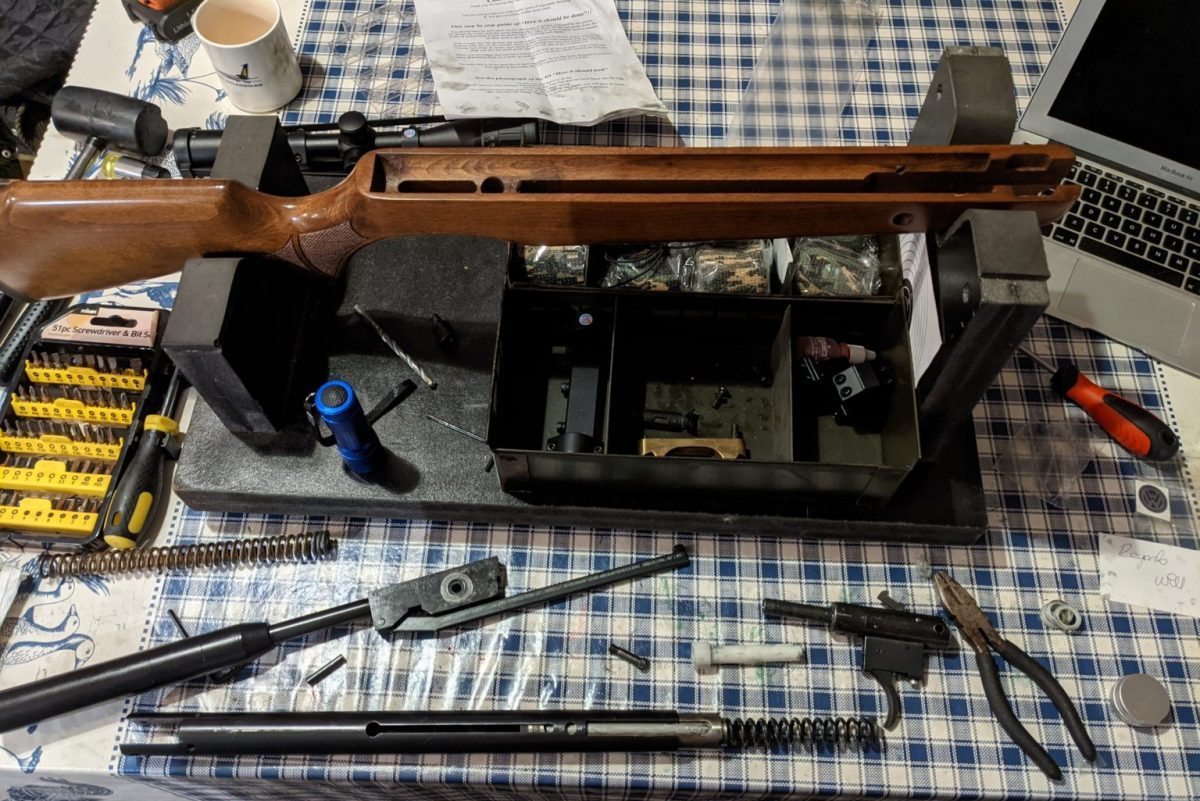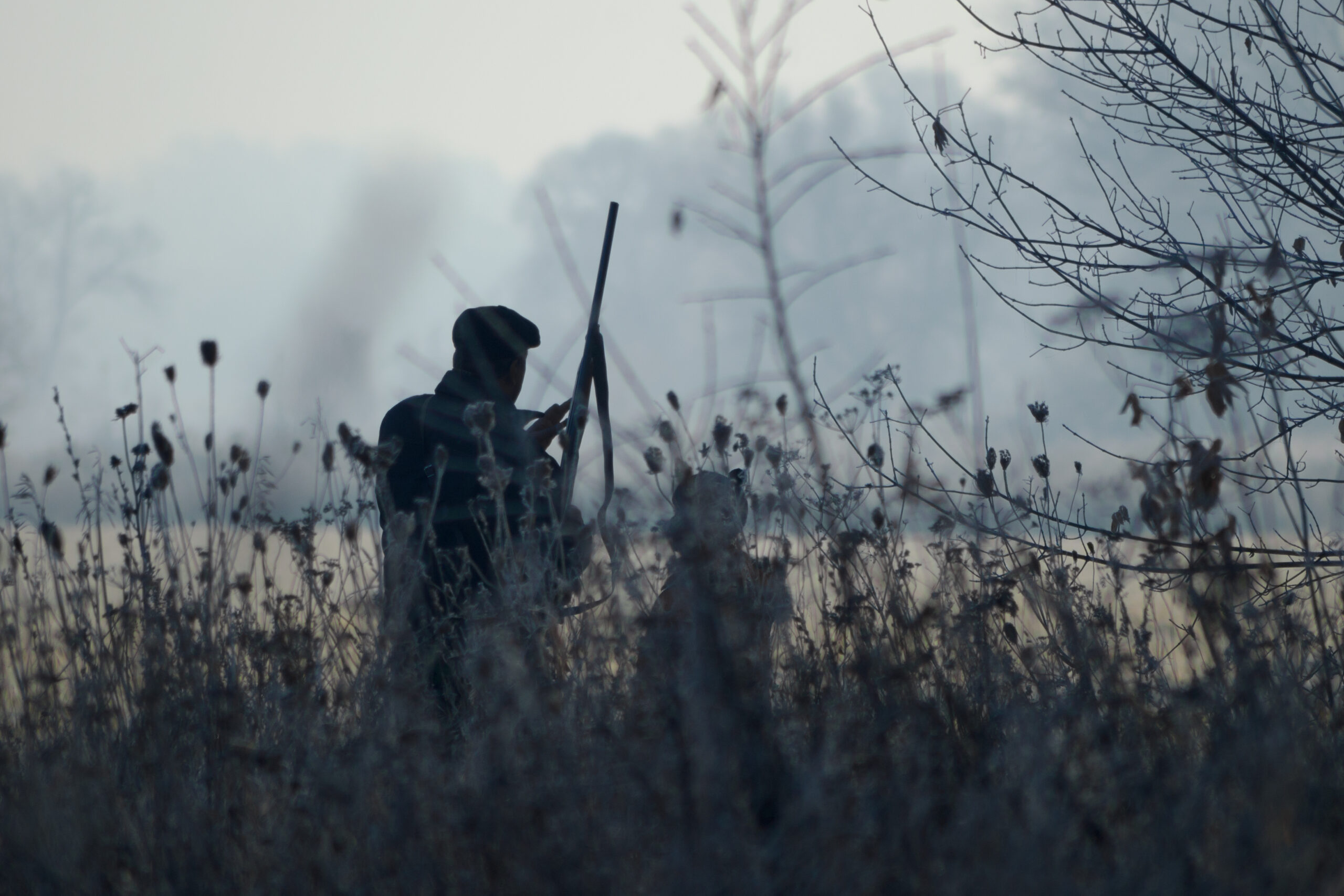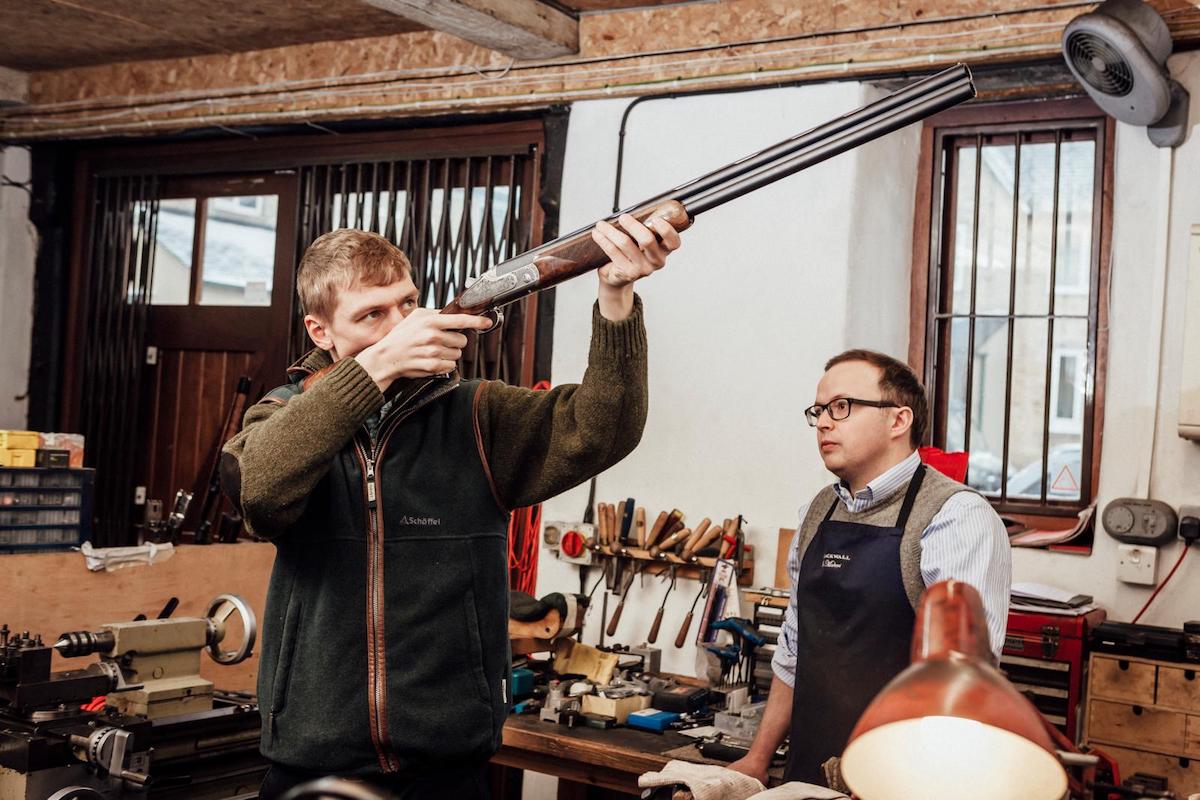How to use a tuning kit for an airgun
Stuart Bannon’s beloved rifle was failing to shoot as well as it used to, so he took matters into his own hands and grabbed a tuning kit.

Anyone who knows the pain of shooting a rifle that just won’t perform as well as it used to will know what I’ve been going through with my Cometa Fenix 400 Carbine. I first bought this rifle from a good friend and colleague of mine. He was giving up shooting in favour of fishing. No accounting for taste if you ask me, but I got a good gun for a good price so couldn’t complain too much.
I remember my first time out shooting with this gun at my favourite range, it was perfect in every way. I could hit anything I liked and it was very accurate, at least as far as my shooting skill allowed. The rifle came in at just over 11 ft-lb, which was exactly what I wanted. It was reliable as well.
On a good day, when I was able to get to the range early, I could easily go through an entire tin of pellets or more and the rifle would perform flawlessly throughout. Many people had heard good things about Cometa guns, but very few had ever seen one in the flesh, and everyone who saw my Fenix was pleasantly surprised.

Stuart loved shooting his Fenix, but it eventually went from being a good performer to a poor performer, so it was time to find out why
But as with all good things this was destined to eventually come to an end.
My shooting skill began to overtake what my setup could give me. No longer content to just hit whichever frying pan or bottle I pointed the rifle at, I wanted to hit the smallest spinners and knockdown targets at longer ranges, and I wanted to chase ever-tighter groups on paper targets. Unfortunately my rifle seemed to be failing me often and I was becoming frustrated.
This was long before Covid-19 came along and it was safe to let others have a go with the gun, just to check it wasn’t me that was letting the team down. It wasn’t. Far better shooters than I am were also having trouble hitting the proverbial barn door with it. The frustration in myself went away, but was replaced with bitter disappointment that my beloved Cometa was failing me.
A bit more troubleshooting and I noticed that a large wok someone had left at the bottom of the range was now requiring massive amounts of holdover just to hit it, whereas before the correct holdover for the same distance had been only slight.

The mainspring in Stuart’s rifle had already been changed once, but turned out to be the Achilles’ heel of this particular rifle
A couple of shots through the club’s chronograph revealed it was now pushing out approximately 6 ft-lb. No wonder I couldn’t hit anything. So off to the gunsmith’s it went to be repaired, and it came back some time later with a new spring. Chatting with my friend over a D&D game, it turned out that he too had had to change the spring when the gun stopped performing for him.
For a time the gun seemed to be back to normal and I was once again knocking over the array of metal animals and kitchen crockery at the range. My joy was to be rather short-lived however. History repeated itself and once again I found myself with a rifle seriously down on power and accuracy.
After some research, it seems that the springs in Cometa guns have proven to be an issue for a number of owners. When working correctly, Cometa guns are very good, especially for their price, but evidently the springs can have a relatively short service life.
Whilst considering my options, issue 141 of Airgun Shooter magazine landed on my doorstep with an article by Mike Morton on tuning his friend’s HW57. Although the article itself left me a little disappointed when it made no appreciable difference to that particular gun, I was inspired to purchase my own Welsh Willy tuning kit for the Cometa in the hope of getting some better results for my rifle.
In case you missed Mike’s article, the kit comes with everything you need for a proper tune-up of your spring-powered airgun.
This includes a Titan mainspring already pre-cut to the correct size for your gun, a Delrin top hat, rear spring guide, two piston slips/washers, three power bands, a pot of green NLT grease, a metal shim liner and a set of instructions for fitting it all to your gun. The instructions also include a helpful note that encourages anyone to get in touch if they need help fitting the kit.
I won’t repeat what Mike already wrote about the quality of the kits, other than to say the workmanship on the mainspring is excellent. I considered buying a Titan spring separately when looking for ways to fix my gun, but was concerned about having the right tools to make a good job of it. The Welsh Willy kits are designed to simply “drop in” with little or no modification.
To start off I did a spot of pre-repair testing of my gun just to give some objective before and after data to go with my own subjective views on the difference the kit makes. And being a bit of a nerd who was bored during lockdown I had also taken great pleasure in making an elaborate spreadsheet to record my results on (yes, I’m one of those kinds of people!).
Using my chronograph, I took 50 measurements using RWS Superdome pellets in .22. Pellet speed came back at an average of 441.66 fps, giving me an average power reading of 6.28 ft-lb. Speed and power spread was 35 fps and 1.01 ft-lb. All in all a bit disappointing compared with what I know this gun used to be capable of delivering.
So on with the strip down. This was mostly an easy job as there are only three screws holding the stock in place and removing the scope isn’t necessary to gain access to the internals, though I did take it off as I was worried about scratching the scope while I was working on the gun. With hindsight however, I will probably leave it attached the next time I do a job like this.
The only difficult part was removing the trigger assembly, because there was no tension left in the spring to push back and help it out when I removed the pin, and it took a lot of gentle tapping with a small plastic hammer to get it out. The new spring reassuringly pushed back when refitting the trigger assembly.
The area where the spring had been cut had been finished much neater than the old one, which had a sharp edge and a rough cut to it. It was also blackened at both ends like it had been heated with a torch for some reason. There was also nothing between the spring and the piston, or on the trigger assembly. Everything ran metal-to-metal inside this gun, which I suspect was the reason behind its prior roughness and unmanageability.
Clearly this metal-on-metal design is where the money is saved by Cometa to achieve the price point this gun comes in at. Personally, I wouldn’t be put off by this, I am still very happy with my Cometa and have no reservations about buying another one in the future. I also never hesitate to recommend them to anyone else looking for a decent budget air rifle.

Instead of just fitting another mainspring, Stuart purchased Welsh Willy’s Cometa 300/400 Service Kit
The Welsh Willy kits are designed to drop in. However, I had to cut away the metal rear spring guide on the trigger assembly to replace it with the Delrin guide from the kit. Once this was done everything did as you would expect and just dropped into place.
The only difficult part about re-assembly was getting the painfully tiny spring and ball bearing that sit under the safety catch back into place. This was mostly my own fault however as naturally I managed to drop the things onto the floor more than once and had to hunt them down with a bright torch and a magnet. Everything to do with the tuning kit, and not my own ineptitude, went together very easily.
With the whole thing back in one piece, I took a couple of test shots to make sure everything was working as it should be and two things were immediately evident. Firstly the noise. The sound of the action and the gun’s internals was greatly reduced, but the muzzle report increased. It’s still perfectly bearable though, so I’m not really worried about the muzzle report right now. If anything, all it signalled to me was that the power gains I was chasing were probably going to be a reality when I got to the power testing phase.
My second discovery was the amount of felt recoil. Before tuning, this gun had a fair bit of a kick to it. Over time I had learnt to manage the recoil as any springer shooter needs to, but there were times when I would look at other springer shooters at the range and wonder if the recoil I was getting from mine was normal. Was I doing something wrong to manage the recoil or was it that my gun was particularly tricky to manage?
With the Welsh Willy kit fitted however, that kick in the shoulder with every shot has been reduced to nothing more than a gentle nudge. The transformation on the recoil front is really quite incredible and is probably the biggest area of improvement.

The trigger assembly was a bit tricky to remove and needed a few careful taps with a plastic hammer before it would come out

The new Titan mainspring, Delrin top hat, rear spring guide, piston slip and power bands have been installed, along with high-quality grease
Moving on to the power, I could tell from the muzzle report on the very first shot after tuning that I had made some considerable gains in this area. Keen to see the fruits of my labour, I pressed on with the chronograph testing. The plan was to put 50 shots through it to bed it in, take a break, then put another 50 shots through the gun, measuring both lots of 50 to see if I could get some data on how well the new parts were bedding in.
I found however that the first 50 shots were spot on in terms of power, and the variations in that power were small, with no real signs that anything about the gun was actually undergoing any sort of change from shot to shot.

With the components fitted and the rifle back in its stock, the Welsh Willy sticker can be applied, letting everyone know what’s now sitting inside
This, along with it being very cold outside when I was doing the testing, meant I decided to leave it at just 50 shots. I’ll wait until I’ve had a few trips to the range before measuring again.
Again using RWS Superdome pellets in .22, velocity measured an average 596.04 fps, giving me an average power reading of 11.44 ft-lb. Spread was 38 fps and 1.45 ft-lb. These figures include a single rogue measurement that was way out compared with the other shots. I suspect this was my fault in not holding the gun perfectly straight to the sensors on the chronograph. With this rogue measurement removed, the spread was reduced to 24 fps and 0.92 ft-lb. This is almost exactly what I was hoping for.
So the gun is at last back to its full power potential, but still sits comfortably under the 12 ft-lb limit. I’m very impressed with the Welsh Willy tuning kit. It really is a great feeling to know that your beloved rifle is finally back up and performing as it should be doing. I feel confident that it won’t be letting me down any more.

Stuart’s Cometa Fenix 400 is now shooting well again – and with far less felt recoil than it did before – what a great result!








